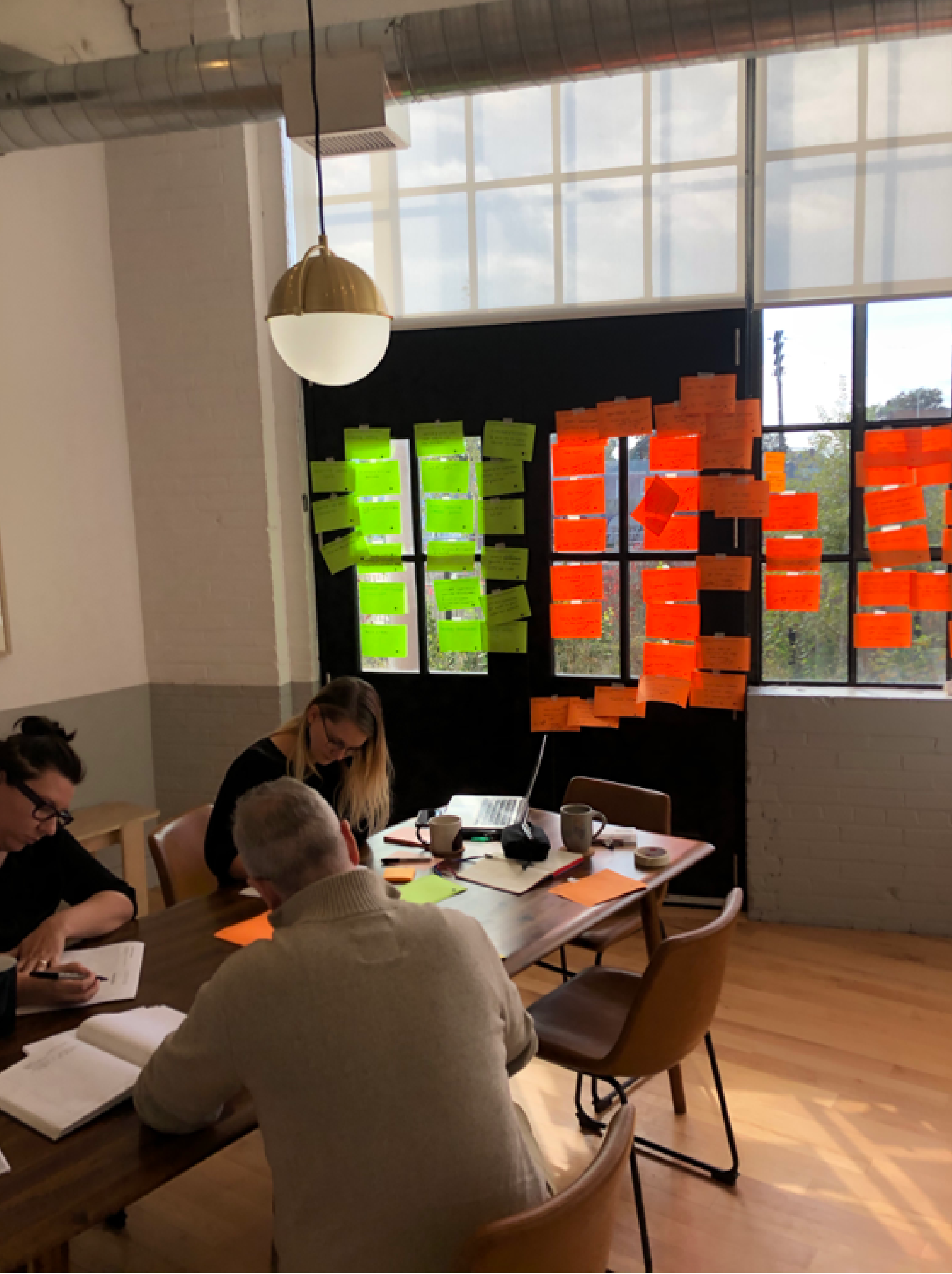IAF Data Narratives




💭 Project Description
Through a series of workshops, DoUC developed a series of frameworks, scenarios, and tools to explore ways data visualization can further engage the Inuit Art Foundation’s diverse readership. Working collaboratively, we designed a process to better understand, connect, and communicate how it collects, uses, and shares its data. The outcome of this process was to create a series of methods and tools that could transform the data into a series of stories to better assist in understanding and communicating with their advertising audience.
Transforming data into stories is not necessarily a complex process, but one that requires understanding and questioning of what the storyteller truly wants to say. The usefulness of data is determined by how the foundation relates it to its values. These values become the driving force behind the stories the IAF wants to tell, and how they can best be communicated.
DoUC translated the IAF’s values and collected data into a tool kit to help the foundation better understand who their advertisers are and what they are looking for. When creating different stories to help guide content design and how to position IAF as an organization, there’s an opportunity to better resonate with their advertisers’ needs. The thinking behind the tool kit is meant to build on existing processes rather than reinvent them, creating additional assets that enhance how the foundation can showcase the breadth and reach of the IAF community.
To commemorate DoUC’s 10 year anniversary, we have organized an interview series highlighting past DoUC projects.
We wanted to take this milestone opportunity to revisit projects in a fun and reflective way, calling on the perspectives of both past and present DoUC team members. Shifting from objective and brief project descriptions, we revisited our work with a renewed intimacy. With more personality. We hope this series provides deeper insight and understanding to past projects. Or, is simply a fun read!
To help you navigate this series, we recommend first reading the project summary for context. Then, you can explore the interview dialogue. Enjoy! 🙃
ℹ️ The IAF Data Narratives interview was conducted with Chris Pandolfi (CP).
How did you come to work on this project?
CP ⤳ Inuit Art foundation was familiar with some of our past work and projects working with data visualization. They approached us to see if they’d be interested in working with them on this project to explore how they could have data viz play a role in their readership surveys.
Can you explain what a “narrative approach to data visualization” is? What inspired this framework?
CP ⤳ Through our work over the years creating various information and data visualizations has illustrated that how we organized what we wanted to say was more important than the data or information we had access to. To focus on creating processes that would assist people in understanding that the same information and data could be used to say different things and more importantly ensure people who were engaging these stories understood why a particular story was being told. Creating frameworks helps to illustrate that behind the data there is the window to understanding the deeper meaning behind how people behave. That is why we usually create a mixture of data and information. To create a richer understanding of what it exists beyond just the numbers and that the way the stories are visualized take into consideration this type of learning. The framework approach allows others to become involved in the process and allow more perspectives and understanding to potentially emerge. Leading to richer stories and visualizations.
“If we can create methods that allow for multiple perspectives it helps us to better engage with actual systems change and quite frankly it creates better ideas and final products.“
Why do you think it’s important to tell the same story from a variety of perspectives?
CP ⤳ Very simply. There is never one story. People experience a thing in multiple ways. At the studio our job should always to be to show as many perspectives as possible. This is important because we are constantly talking about the relationships between systems and making people understand that we try to look at things from the perspective of situations rather than classic problem solving. If we can create methods that allow for multiple perspectives it helps us to better engage with actual systems change and quite frankly it creates better ideas and final products.
 While transforming the data into stories, did you find anything unexpected or even challenging to navigate? Tell us about it!
While transforming the data into stories, did you find anything unexpected or even challenging to navigate? Tell us about it!
CP ⤳ It was interesting to look at the information around what and how people were using their website, that people weren’t just using the website to gain knowledge about IAF, they were also using it as a resource for finding professional opportunities within their community. Looking at the readerships survey, although questions were separated, it was really interesting finding interconnected insights between the different questions that weren’t necessarily designed to be linked. For example, looking at data from a classic yearly perspective is how things are usually designed, but if you look at the same data from a generational perspective it might show you very different things about shared needs and wants. The challenging part is sometimes narrowing down the scope when you’re looking at large amounts of information, you want to look at everything but need to break it down into pieces instead of looking at the whole thing. Make decisions about what’s most important.
When you were creating this toolkit, why was it important to build on existing processes rather than rather than reinvent them?
CP ⤳ When we started the second phase of work, it was important that we weren’t starting from scratch. We tried to make a model in the first phase that could expand and be used by others, and isn’t meant to just be an island. We wanted to use the model from the first phase and test that it would actually work, and to build the organization’s capacity to understand and use it better, and to continue building more processes that take advantage of the previous work. The point of all this is that you’re building tools for people to use in their every day work, so you need to create things with enough structure to make it easy for them to use, but is still open enough to allow them to build and expand on it as their knowledge and experience grows.
It’s been a great experience with IAF for exactly this reason, we’ve had the opportunity to continue working with them in intervals over the past few years and also now, revisiting what we previously created together and finding new ways to build out from that work. It’s exciting to see how the things we’ve made can turn into new things, and how they can become incorporated into the organization’s thinking processes.
If people wanted to explore the IAF community themselves and learn more about Inuit stories, do you have any recommendations? Maybe some resources where you yourself got started or expanded your knowledge/ideas!
CP ⤳ Inuit Art Quarterly, Inuktitut dictionary, and Inuit Tapiriit Kanatami’s Writing System

